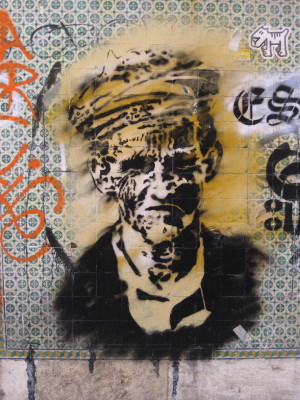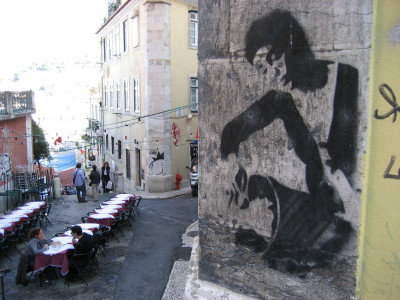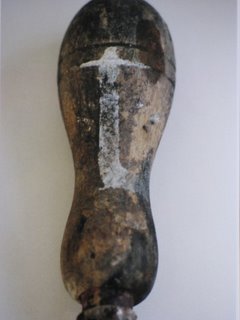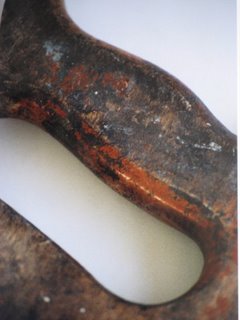
The
Fieldgate Gallery in Whitechapel has become one of my regular must visit art spaces, initially I was overwhelmed by the scale of the space and in the group shows they exhibit the equally overwhelming number of works scattered around the gallery, but these initial doubts have subsided and it is one of those galleries that have crept into my mind and pull me back with each new show. The current exhibition
‘Houses In Motion’ is curated by
Richard Ducker and features the work of 16 artists, the artworks are scattered through the space in a slightly distracting manner, they are no doubt dictated by the peculiar dimensions of the space and despite the initial perception of randomness a visitor can feel the natural flow of movement from one work to the next. On entry to the gallery I was attracted to
Roger Kelly’s drawings, they are swamped by the other works on show but their quietness coaxes me in, the pencil drawings using line but no tonal variations of shade did not give up their subject in an obvious manner to me. I can still not tell what the drawings were of but the level of draughtsmanship on show is entrancing, they are subtle but make you look. Stripped of shade, light and dark they are reminiscent of an architects fantasy imaginings in graphic novel form, they are similar to the sketches of the architect Lebbeus Woods who also constructs similar drawn imagery. Kelly’s two drawings here are much less readable, architectural, engineered and manufactured forms amalgamate to create a cluttered and abstracted environment.
Gaia Persico’s sketches on small pages of hotel notepaper also lie in the realms of the architect. On the course of her travels she has sketched architectural forms on these small pre-printed scraps of paper, lined up along the gallery wall are tiny line drawings of cranes, pyramid type structures, walled spaces and towers. This manner of sketching is reminiscent to the rudimentary initial sketch ideas formed by architects on their travels but in Persico’s case the observed is altered. Real and imagined form the drawing and the line between the two are literally and metaphorically blurred.
These constructs of the real and imagined vying for attention resonate through many pieces in the show,
Amikam Toren’s chair piece takes a wooden chair and whittles it down to a much finer less solid structure. With solidity removed from the designed form and with the edges rounded and shaped the chair begins to look like some terrible skeleton. Wood becomes bone and the simple comforting object becomes a strange, silent but vaguely menacing presence. More bones on view but this time they are real,
Alistair Mackie has constructed a small, delicate, sculptural bird cage. Subverting the process that created these skeletal remains he has fashioned this avian cage from the bones of rodents found in birds nests.
One work which does not play with real and imagined is
Kathleen Herbert’s ‘Nightwatch’ photographs, in the spaces of the gallery normally reserved for video work are Herbert’s three photos of night shift security guards. These are simple but effective images of lone security guards sat at the reception desks of city offices, from the dark exterior realms of the street Herbert has quietly observed the men who have to work when the rest of us sleep. Without being noticed she has taken portraits of these men, the distance and lighting has stripped the photographs of a certain clarity but the unknown sitter’s faces can be seen quietly pinpointed in light whilst the darkness of the night time alters the colouring and shading to the outer edges of the frame of the photograph. From the light in the centre of the portrait which highlights the subjects face the isolation of the scene is heightened by the pervasive presence of the night time darkness, incrementally the light moves through progressive shades of greys, browns to a final dull soft blackness at the extreme edges of the photo. These photos are impressive enough but what really sets these images to their best effect is the wider sculptural effects of the lighting and the placing of them within this particular part of the Fieldgate gallery. They are isolated in a small darkened office space adjacent to a larger room, the lighting of the photos is extremely low but enough to view the photos in comfort whilst leaving the room somewhat underlit. From the larger room the effect is finished by the small window in the wall of the office, the architecture of the gallery complements these photos perfectly and from outside the room the viewer sees the photos echoed by the gallery architecture in a wider sculptural context.
Back in the main space one piece is of such scale that it demands attention, in the centre of the larger gallery space sits
Stewart Gough and
Tom Ormond’s caravan, for an object of this scale it does not overpower the other works. The caravan is intact on three of its four sides, however, the remaining side and roof have been altered by Gough and Ormond. Cutting into the structure of the caravan they have folded out in varying angles and shapes the existing structure, the internal fittings of the van have been left intact except where the interventions into the fabric of the object have necessitated. The interior of the caravan is exposed as this quiet explosion of edges, shapes and forms fold outwards into the air. It is an impressive sculpture, manufactured with an ergonomic eye Gough and Ormond have made just enough interventions and to a complementary scale and manner. In others hands this may have gone beyond the point necessary but they have held themselves steady and stopped short of overworking the sculpture and this restraint has been paid
back with a rewarding piece that is pleasing, subtle and thoughtful. I was lucky enough to be able to talk to Stewart Gough a little about the work and the back story to the project enhanced my enjoyment of the piece even more, from the research into the correct model of van to the rushed and frantic efforts to find one as time was running short, to the purchasing, via ebay, and the subsequent West Country road trip to pick up the caravan and the logistics of its packing into a van and transporting back to London.
Gough and Ormond’s sculpture adds a fun, humorous and down to earth complement to the overall exhibition and with the initial curatorial brief highlighting a broad response to the built environment once again the Fieldgate gallery brings us another rewarding exhibition with a large group of artists who have all embraced the aims of the exhibition to show us work of great scope, reflection and honesty.
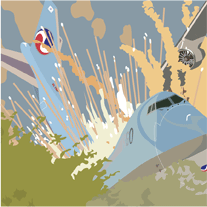 When I was a child I was fascinated by dictionaries, encyclopaedias and maps, the classification and representation of ‘things’ amazed me, the fact that somebody could collect and collate all that knowledge into one accessible document. In later years as a nine to five’ing adult I would realise just how tedious the production of such documents and publications could be as my boss and I would proofread chemical listings, technical descriptions and equations drafted for print in scientific documents, luckily (or maybe because of) I have moved into a rather more interesting, if less financially lucrative, life. However my childhood excitement of the bizarre descriptions and exotic photographs of the scientific world in encyclopaedias has stayed with me, grainy black and white photos of aircraft, vehicles, ships, rockets, weaponry and industrial architecture still entrance me.
When I was a child I was fascinated by dictionaries, encyclopaedias and maps, the classification and representation of ‘things’ amazed me, the fact that somebody could collect and collate all that knowledge into one accessible document. In later years as a nine to five’ing adult I would realise just how tedious the production of such documents and publications could be as my boss and I would proofread chemical listings, technical descriptions and equations drafted for print in scientific documents, luckily (or maybe because of) I have moved into a rather more interesting, if less financially lucrative, life. However my childhood excitement of the bizarre descriptions and exotic photographs of the scientific world in encyclopaedias has stayed with me, grainy black and white photos of aircraft, vehicles, ships, rockets, weaponry and industrial architecture still entrance me.


